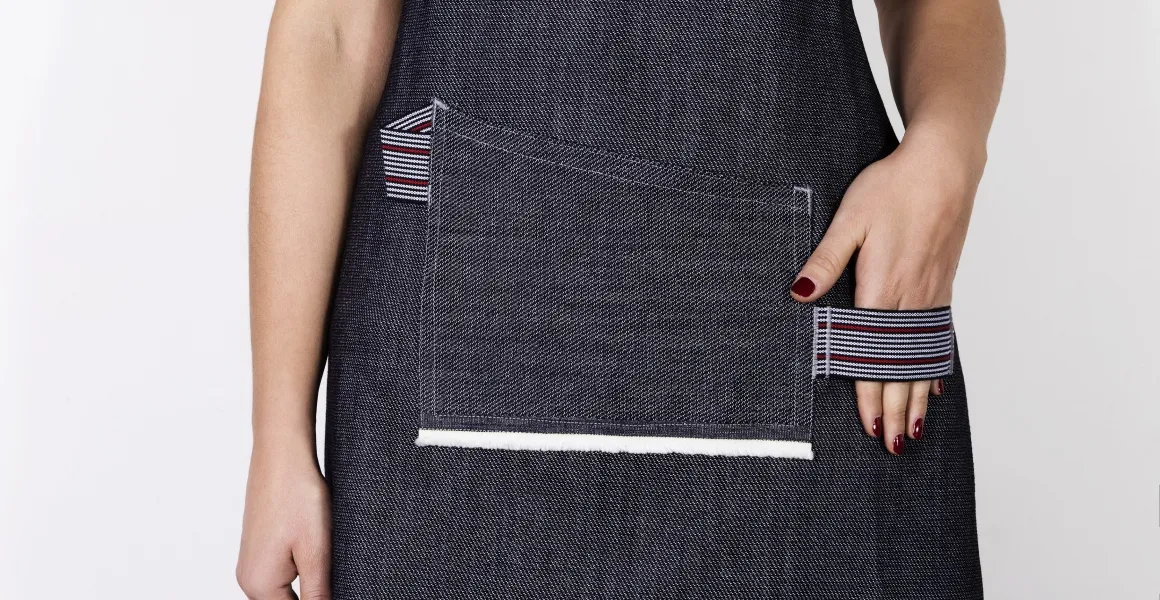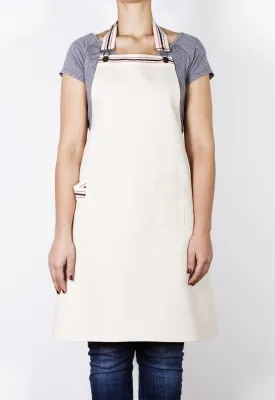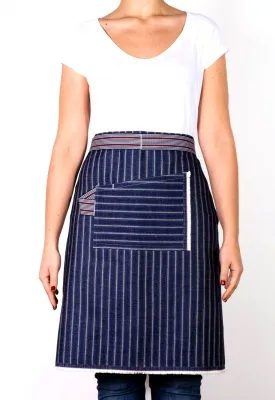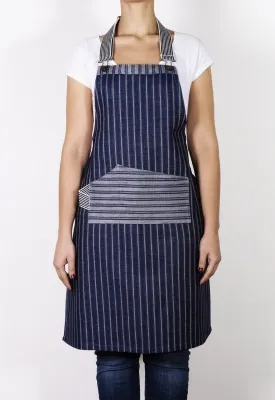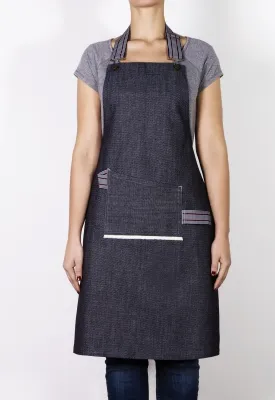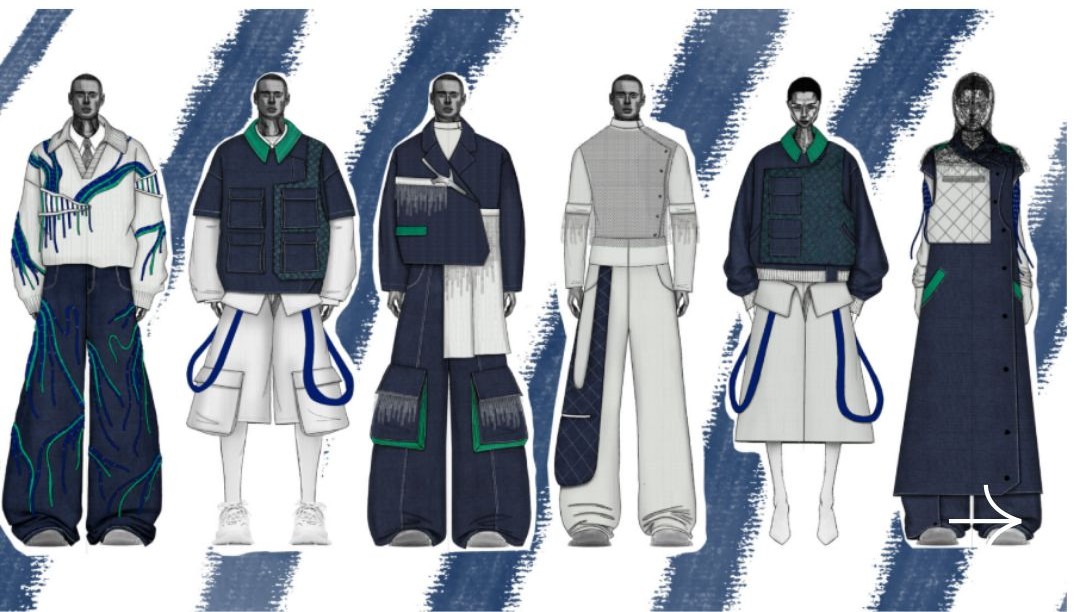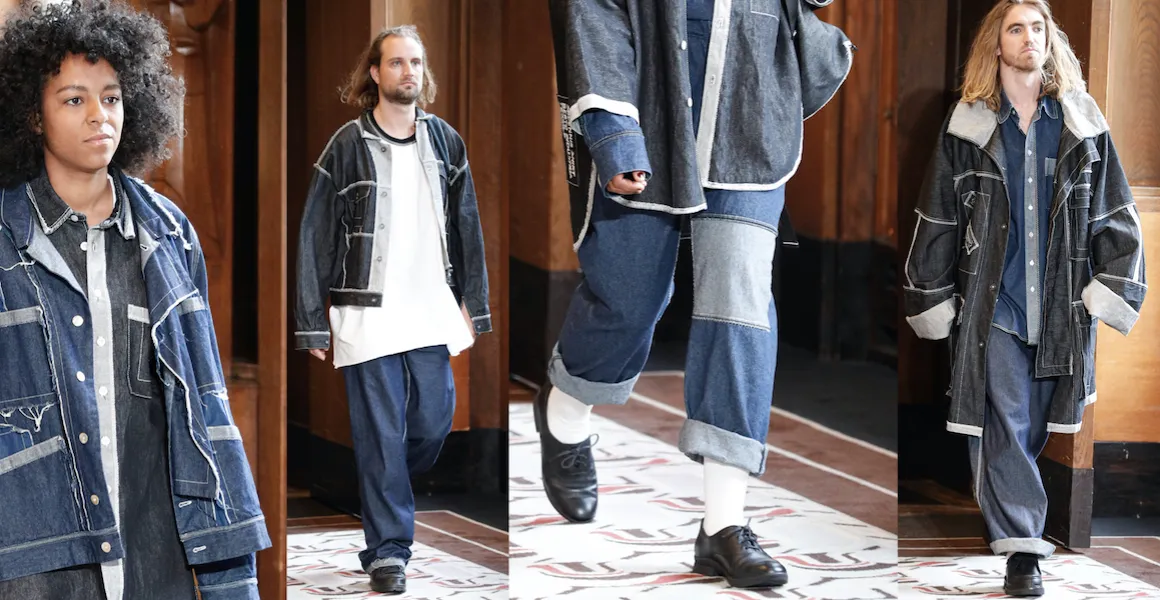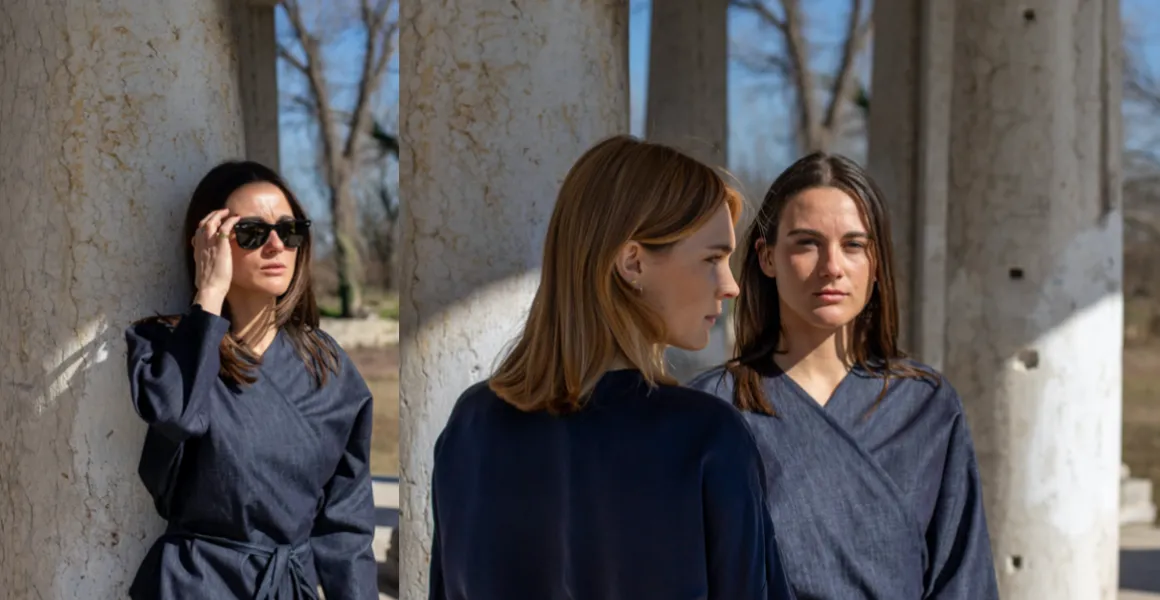What was your first project?
One day, a chef friend of mine, almost jokingly, asked me to make him a “special” apron. From this, I understood that artisans who create beautiful and unique things need more style in their aprons without compromising on durability! That’s how I started my TAC atelier.
The creative process: do you work instinctively or plan every single step? Where do your ideas come from?
Depending on the client, I apply both processes, adapting my models based on each client’s needs, through a design that’s carefully crafted down to the smallest details: pockets, metal hardware, threads, and colorful ribbons (which are my signature style, like neckties).
How did you come into contact with Berto?
A friend of mine who works in the high-fashion textile sector suggested I take a look at the initiative on your berto4young talents website.
Which Berto fabrics have you worked with for your project and collections?
I worked with seven different Berto denim fabrics: Reverse bull, Dandy blue, Selvedge spell grey, Janis 4 and Janis 5, History glory, and Floral print.
“Less but better” can be interpreted as an endorsement of a certain degree of purity in design as well as in fashion design. It can also be understood as an environmental message about reduction and sustainability. What do you think?
I strive to use the best workwear fabrics that are simultaneously functional, beautiful, and durable. Fabrics like denim originated as workwear, used to protect workers during demanding tasks. This idea of using a durable fabric for a quality garment can reduce consumption and consequently could reduce pollution.
Is there something you’ve never done that you’d like to accomplish?
I am designing a new line of garments dedicated to chefs, particularly jackets that aren’t too classic; I would like to make them with your denim fabrics.
